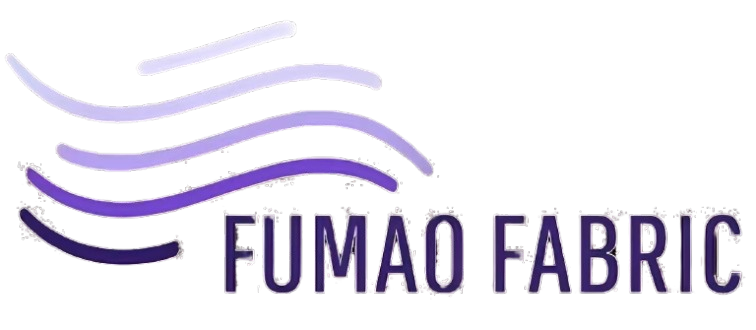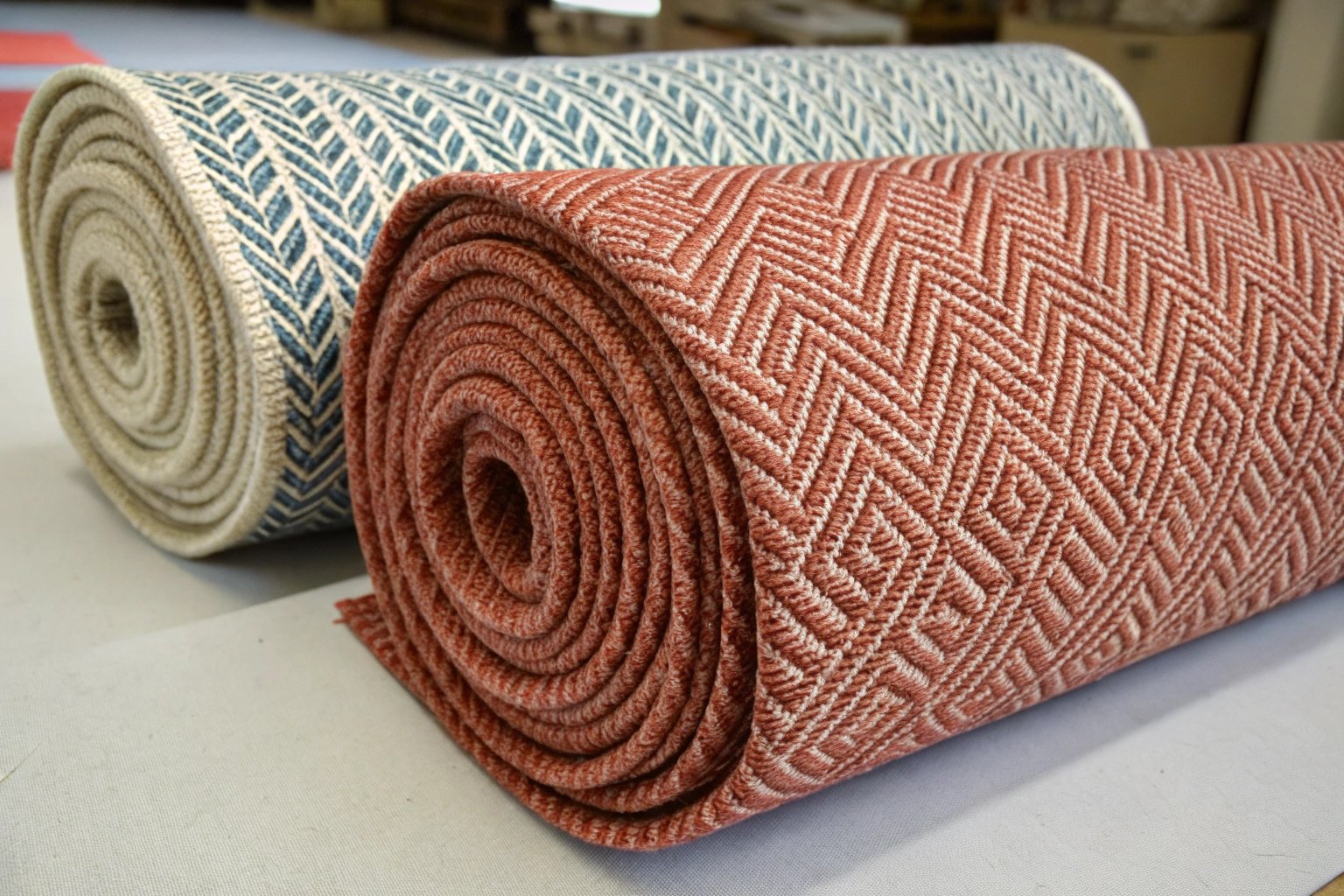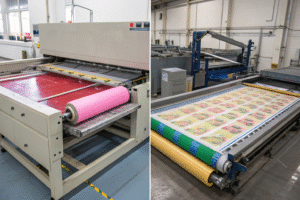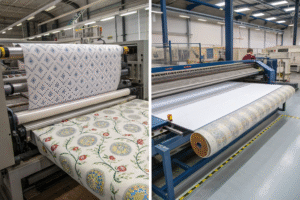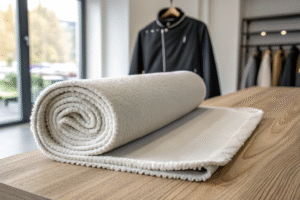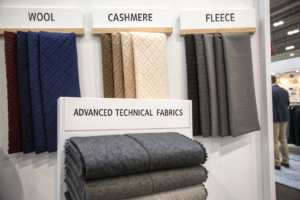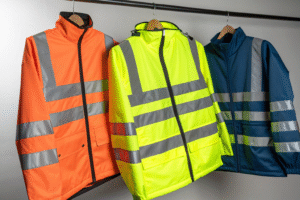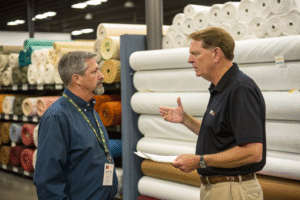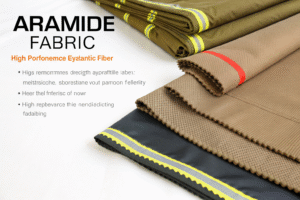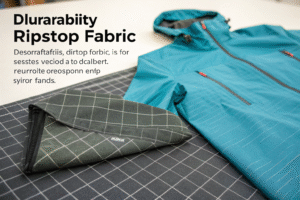Fabric dyeing techniques have a massive impact not just on color, but also on design, durability, and lead time. Yet many apparel and textile buyers are unsure which method suits their production needs best. Should you choose yarn-dyed fabrics with built-in patterns, or opt for flexible and efficient piece-dyed materials?
The difference between piece-dyed and yarn-dyed fabrics lies in the stage of color application—post-weaving versus pre-weaving. Each method has unique advantages depending on product goals, order size, design requirements, and cost sensitivity.
At Fumao Fabric, we’ve helped brands from startup labels to global uniform suppliers choose the right dyeing method for their project. In this article, I’ll break down how each process works, their respective pros and cons, and how to source each type efficiently.
How Do Piece Dyeing and Yarn Dyeing Work?
The core difference between the two lies in timing. Piece dyeing colors the fabric after it has been woven or knitted, while yarn dyeing adds color to the yarns before fabric construction.
Piece-dyed fabrics are dyed as whole cloth; yarn-dyed fabrics are made with pre-colored yarns, often resulting in patterns like checks, stripes, or chambrays.
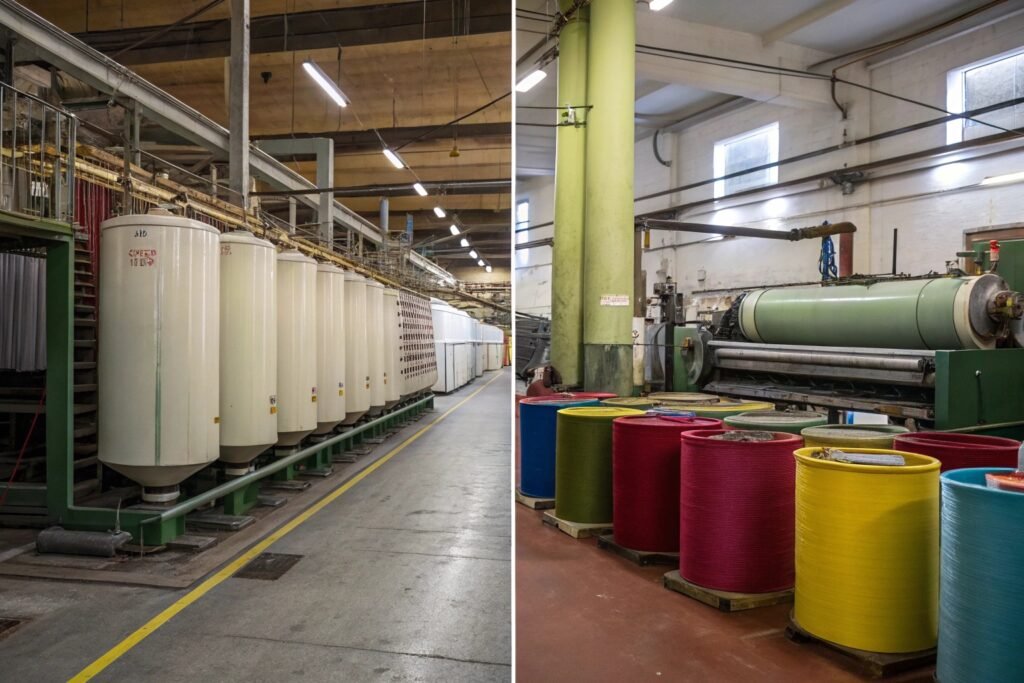
What Is the Process of Piece Dyeing?
Piece dyeing usually involves jet dyeing, pad dyeing, or winch dyeing. It allows mills to dye greige fabric in small or large batches, offering color flexibility. This method is widely used in fashion basics and seasonal colors that change rapidly.
At Fumao, our reactive dye lines for cotton piece dyeing run 24/7 during peak fashion cycles, delivering fast turnaround on trend-driven palettes.
How Does Yarn Dyeing Work?
Yarn dyeing typically involves dyeing cones or hanks of yarn using processes like package dyeing or skein dyeing. These colored yarns are then woven or knitted into fabrics with complex color patterns or textures.
For instance, our yarn-dyed cotton stripes are popular in men's shirting for their sharp definition and color fastness compared to piece-dyed equivalents.
What Are the Cost and Lead Time Differences?
Choosing between these methods often depends on your budget, production quantity, and time constraints. Piece dyeing is typically faster and cheaper, while yarn dyeing adds both complexity and precision.
Piece dyeing wins on cost and speed; yarn dyeing offers high-end appearance and technical control for patterns.
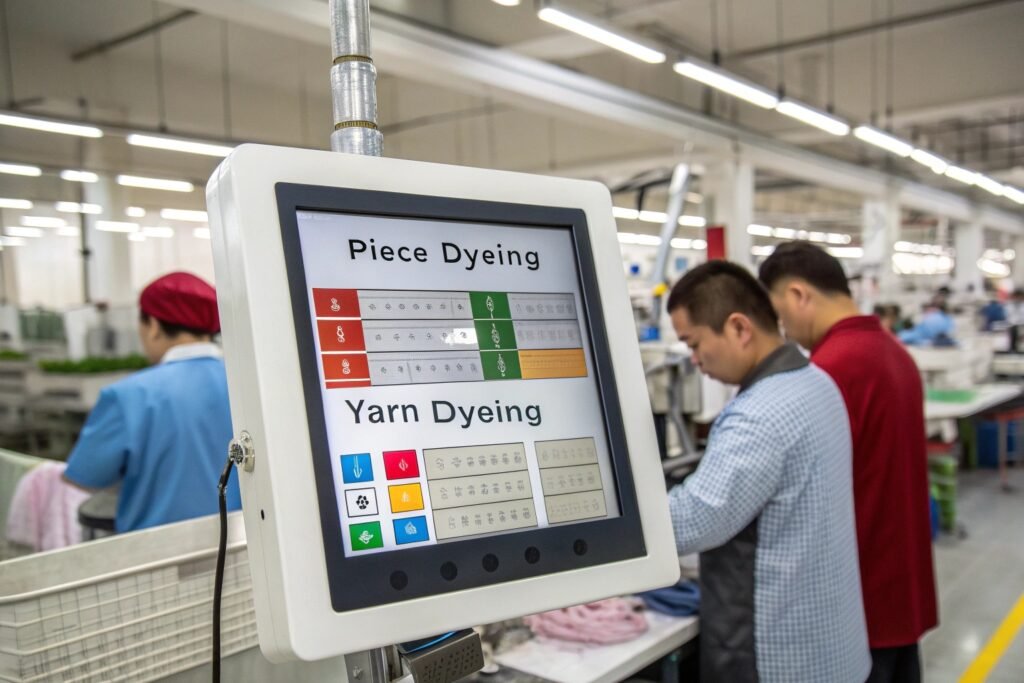
Is Piece Dyeing More Cost-Effective?
Yes. Since the dyeing happens after weaving, piece dyeing uses fewer processing steps and is easier to schedule. That’s why it’s preferred for fast fashion and small-batch trend lines. We can develop and dye piece-dyed swatches within 3 days at our Keqiao facility.
Piece-dyed polyester also tends to have lower minimum order quantities (MOQs), which helps small brands or test orders.
Does Yarn Dyeing Have Longer Lead Times?
Yarn-dyed fabrics require pre-dyeing yarns and then weaving, so the entire process can take 2–3x longer than piece dyeing. This affects sampling and production cycles. However, for products where the pattern is the hero—like gingham shirts or plaid school uniforms—the results are worth the wait.
Many of our B2B customers use yarn dyeing for evergreen core styles and piece dyeing for seasonal quick-turn designs.
Which Applications Suit Each Dyeing Method?
Each method shines in different product categories. While yarn dyeing is ideal for pattern precision, piece dyeing provides more flexibility in color customization and fabric types.
Use piece dyeing for solids, garment dye looks, and trend colors; opt for yarn dyeing when visual texture, stripes, or color integrity are critical.
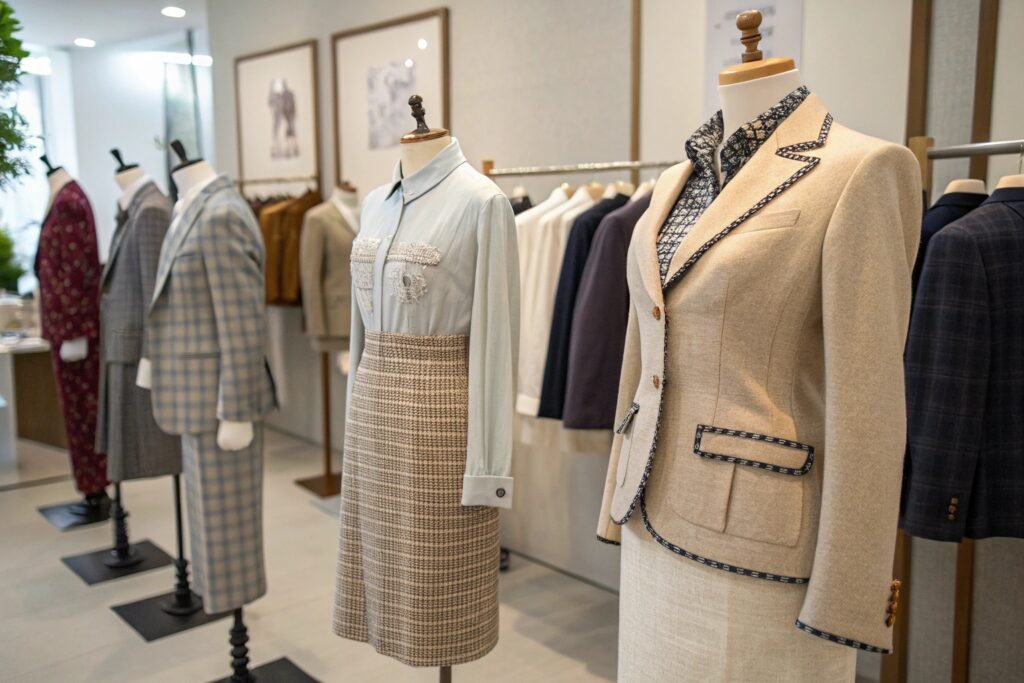
What Products Use Piece-Dyed Fabrics?
You’ll find piece-dyed fabrics in athleisure, denim, T-shirts, leggings, trench linings, and kidswear. They allow last-minute color changes and broad textile compatibility—from cotton to rayon to synthetics.
We supply piece-dyed stretch poplins for yoga brands in the U.S. who frequently rotate colorways across campaigns without re-weaving fabric.
Where Is Yarn-Dyed Fabric Essential?
Yarn-dyed is often chosen for suiting, workwear, checkered shirting, hotel uniforms, and home textiles like table linens. The color permanence is higher, and patterns stay crisp even with frequent industrial laundering.
Many European fashion labels insist on yarn-dyed pinstripes or dobby weaves for premium shirts because it reflects craftsmanship and attention to detail.
How to Source Each Type from Certified Mills?
Whether you need flexibility or finish precision, supplier selection matters. Not all mills are equipped to handle both methods equally—some specialize in one. Certifications, dyeing lab capabilities, and order adaptability are key sourcing criteria.
The best suppliers offer in-house dyeing with fabric-specific expertise, quality control documentation, and sustainable dye processes.
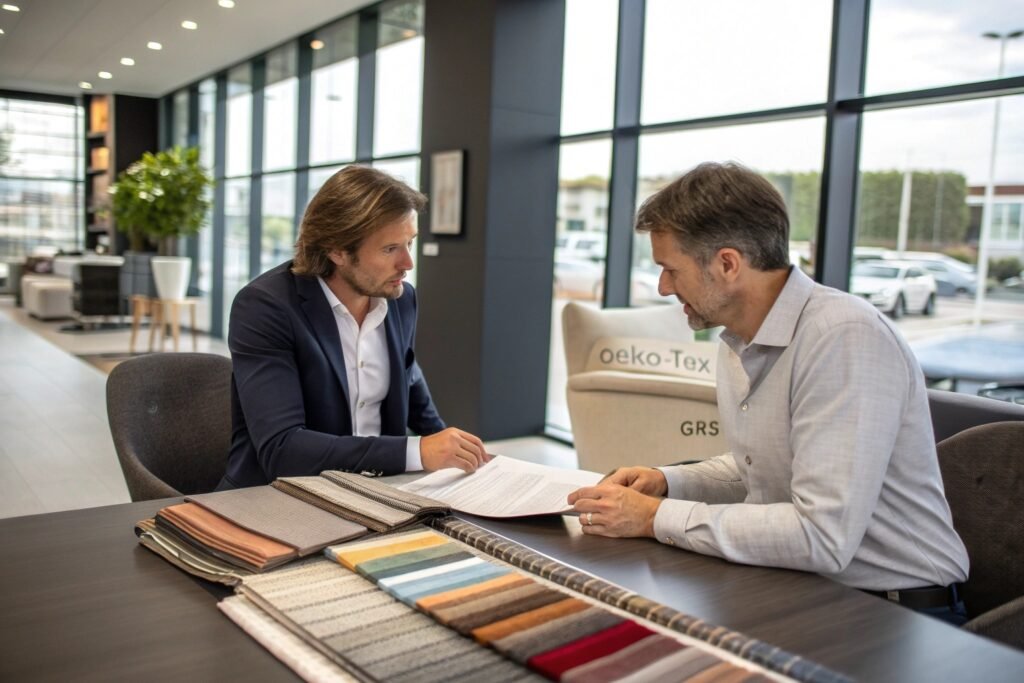
What to Ask Your Supplier?
Ask if the supplier does in-house dyeing or subcontracts it—this affects QC. Confirm their lab dip process, certifications, and whether they provide batch-level shade control reports.
We offer clients access to our in-house CNAS-accredited lab reports, and our yarn-dyed fabrics carry GRS certification when using recycled polyester.
Can You Combine Both Dyeing Techniques?
Yes. Many clients use yarn-dyed base fabrics and add piece-dyed overdye effects for unique tonal outcomes. We’ve developed custom blends for capsule collections combining structure and tone-on-tone color layers.
It’s also common in denim: yarn-dyed warp with piece-dyed weft or vice versa. This hybrid approach offers rich aesthetics while keeping production lean.
Conclusion
Understanding the difference between piece-dyed and yarn-dyed fabrics empowers you to make better sourcing decisions. For flexibility and color speed, piece dyeing is your go-to. For pattern integrity and texture, yarn dyeing excels. At Fumao, we offer both under one roof—ensuring you get the right technique for your vision, budget, and delivery timeline.
